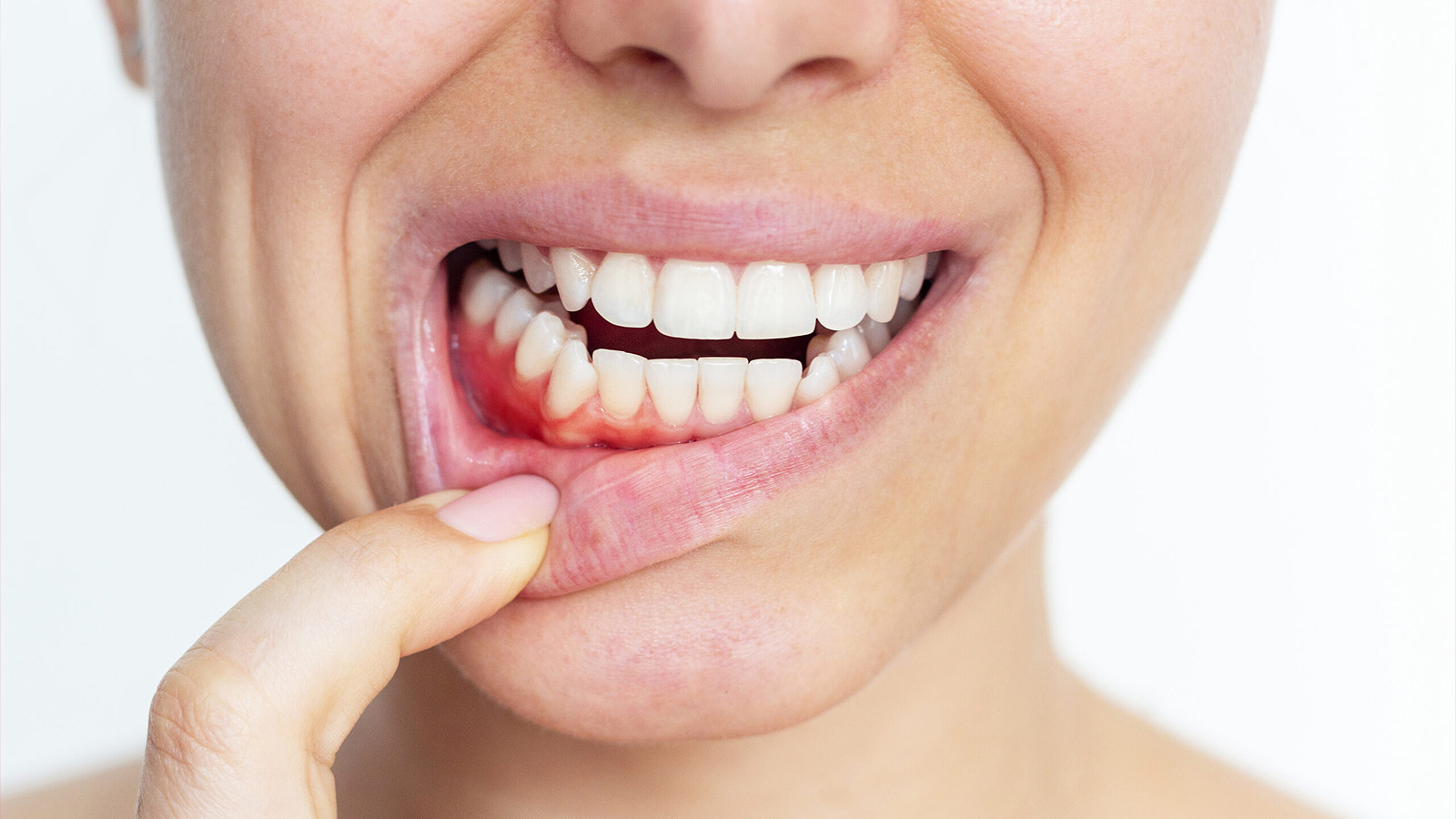Gingivitis:
causes, symptoms, treatment and prevention

Gingivitis refers to inflammatory diseases of the gums and is characterized by redness, swelling and bleeding. It is the most common form of periodontal pathology and often serves as a precursor to more serious conditions — particularly periodontitis, where inflammation spreads into deeper tissues, including the periodontal ligament and bone. The key issue with gingivitis is that, at early stages, it may develop almost without noticeable symptoms. This leads to delayed professional care, when the inflammatory process is already stable and requires long-term treatment.
According to the European Federation of Periodontology (EFP, 2023), signs of gingivitis are found in more than 60% of adults in Europe and the CIS countries. Research conducted at the University of Oslo (2021) confirms that untreated gingivitis progresses to chronic periodontitis in 68–85% of cases. Therefore, early detection and treatment of gum inflammation are essential not only for maintaining an attractive smile, but also for preventing tooth loss.
Causes of Gingivitis
The primary cause of gingivitis is bacterial dental plaque that accumulates on the surface of teeth and near the gum line. If oral hygiene is insufficient, plaque mineralizes into tartar, leading to chronic irritation of the gum tissue. However, gum inflammation is not always associated solely with hygiene. Factors such as hormonal changes, metabolic disorders, gastrointestinal diseases, anemia, diabetes mellitus and weakened immunity also play a significant role.
Smoking is one of the most serious risk factors. According to the World Health Organization (WHO, 2022), the risk of periodontal disease is 2–3 times higher in smokers. The toxic effects of nicotine reduce microcirculation, impairing nourishment of the gum tissues and slowing their regeneration. Age-related and stress-related hormonal fluctuations also matter: adolescents may experience gingivitis during hormonal peaks, while pregnant women often develop hypertrophic gingival reactions due to elevated progesterone levels.
Prevalence of Gingivitis in Europe and the CIS
Epidemiological studies confirm the high incidence of gingivitis across age groups.
In Romania, inflammation of the gums is observed in 91% of children aged 10–17 (PubMed).
According to the European Journal of Paediatric Dentistry (EJPD), signs of gingivitis are present in 70% of children over 7 years old.
In Russia, according to CyberLeninka, chronic catarrhal gingivitis is diagnosed in 56.4% of students, and in 80% of cases the disease becomes chronic.
This high prevalence highlights the importance of systematic prevention and regular dental examinations.
Forms and Manifestations of Gingivitis
Gingivitis may develop acutely or chronically. The acute form presents with pronounced clinical symptoms: significant swelling, heavy bleeding and pain during chewing or brushing. The chronic form develops slowly, and patients may only notice mild bleeding and persistent bad breath. Gradually, the gum margin undergoes structural changes and gum recession may occur, leading to increased sensitivity and reduced aesthetic appearance.
Modern diagnostic techniques, such as the bleeding index, probing of periodontal pockets and digital photometry, allow evaluation of inflammation severity and disease staging.
Methods of Treating Gingivitis
Treatment aims to eliminate the causes of inflammation, restore healthy oral microflora and strengthen periodontal tissues.
The first step is professional dental cleaning, which includes removing soft and hard deposits using ultrasound and AirFlow technology. This step is essential, as gingivitis cannot be cured without removing bacterial plaque.
Next comes medication therapy: antiseptic rinses (chlorhexidine, miramistin), gels containing chlorhexidine and hyaluronic acid, and applications with methyluracil or anti-inflammatory agents. If needed, laser therapy is prescribed to reduce bacterial load and stimulate mucosal regeneration.
A crucial component of treatment is instructing the patient in proper brushing technique. Studies published in the Journal of Clinical Periodontology (2021) confirm that patients who receive oral hygiene training have a 40% lower risk of recurrence compared to those treated only with medication.
Prevention of Gingivitis
Prevention includes regular oral hygiene — brushing teeth twice daily, using dental floss or an irrigator, reducing sugar intake and attending professional check-ups every six months. Professional cleaning performed 1–2 times per year removes tartar and prevents chronic disease progression.
Gingivitis and General Health
Chronic gum inflammation can affect the cardiovascular system and metabolism. According to the Journal of Clinical Periodontology (2021), bacteria from inflamed gums can enter the bloodstream, contributing to atherosclerosis and increasing cardiovascular risks. In patients with diabetes, gingivitis increases inflammatory markers and complicates glycemic control.
Treatment of Gingivitis at Diplomat Med Center
At Diplomat Med Center, gingivitis treatment is carried out comprehensively. We perform professional cleaning using ultrasound and AirFlow, prescribe individualized medication therapy and apply laser treatment to accelerate tissue regeneration and reduce inflammation. At the same time, full oral sanitation is performed: treatment of caries, correction of restorations and elimination of traumatic factors.
We place special emphasis on proper oral hygiene training to ensure lasting results.
In addition to gingivitis treatment, you can also undergo caries treatment, orthodontic treatment,
dental prosthetics and professional hygiene procedures.
Diplomat Med Center is a modern dental clinic in Chișinău, where the health of your gums and beauty of your smile are cared for holistically. Schedule your consultation today — we will restore the health of your gums and the confidence of your smile.
